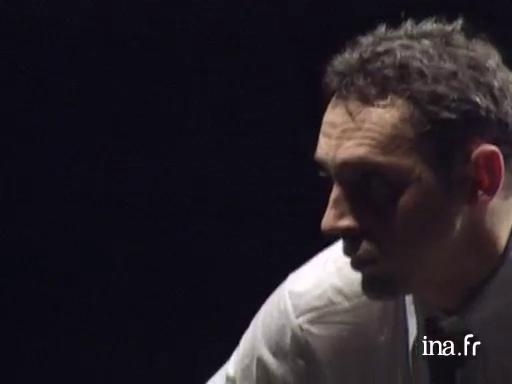Portrait of Josef Nadj

Information
Portrait of Josef Nadj who presents excerpts of several of his choreographies interpreted by his troupe, as well as the Le Cri du Caméléon show which he worked on with the Anomalie company. Comments by the choreographer who talks about the influence of his father, a carpenter, on the themes of his creations (the wood, the table) and on his relationship with the materials.
Context
Josef Nadj is a choreographer, Plasticien and photographer born in 1957 in Yugoslavia. While young he practised drawing and envisaged a career as a painter. It was during his studies of the history of art and music in Budapest that he started out in corporal expression and theatre. In 1980 he left for Paris and continued his training with Marcel Marceau, Etienne Ducroux and Jacques Lecoq. He also took lessons in contemporary dance, tai chi, butoh and contact dance. He became a performer in choreographic creations by Sidonie Rochon, Catherine Diverrès, François Verret and Mark Tompkins. In 1986 he founded his company and his first show,Canard Pékinois, was performed in 1987 at the Bastille Theatre, then at the Théâtre de la Ville in Paris. Since then, Josef Nadj created around twenty shows, all rich in his eclectic education and his Slavic origins, between theatre and dance, real and dreamlike, funny and dark. His path was punctuated by literary influences and homages to authors: Beckett(Le vent dans le sac, 1997), Kafka (Les Veilleurs, 1999), Büchner (Woyzeck, 1994) or Michaux (Asobu, 2006). Since 1996 he regularly shows his plastic and photographic work. In 1995 he was named director of the National Choreographic Centre of Orléans.













